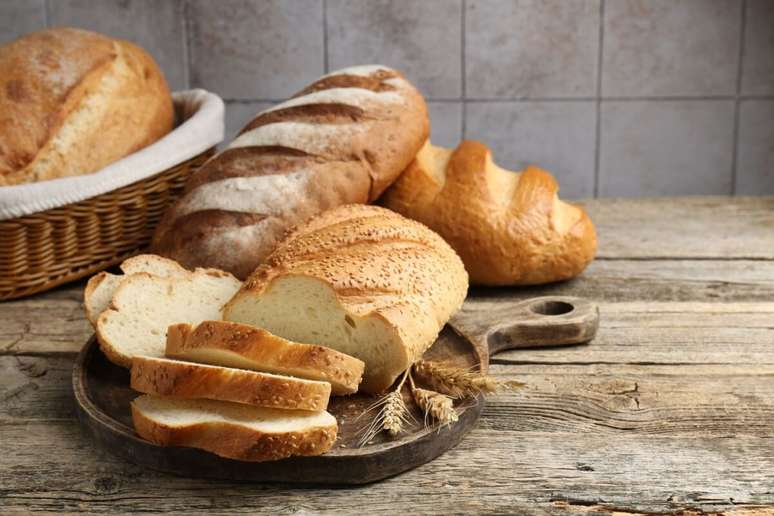Salmon, tuna and even bacon get special versions for vegans, with an eye on the growing market in Brazil
Gone are the days when the only option for vegetable proteins it was that burger with an exaggerated smoky taste. The ingredient paved the way, but now the market has found new possibilities. In restaurants across Brazil, menus are already adapting to new realities with plant-based dishes ranging from bacon, through salmon and tuna, to pizza and feijoada.

In São Paulo, a menu that shows creativity in using vegetables to recreate the look and taste of animal proteins is that of Green Kitchen. There, customers can find polpetone, feijoada, fish and chips, sausage and even “lombinho without pork”. The recipes are part of a broader idea from executive Fábio Zukerman, the name behind Green Kitchen, who seeks plant-based food solutions for everyday life.
The flavors follow the appearance and are similar to the product he is trying to imitate. The pancetta, marinated and fried vegetable meat, has a crispy crust on the outside and accompanied by a little lemon. And in the mouth it works: it remembers the taste of the “original” and manages to keep the juiciness inside. The meatball, made with peas, is a little behind in the surprise it causes, but it does much better than the frozen vegetable platter at the market.
“The hamburger was really an invitation for us to understand all the possibilities of this universe of plants. We have definitely managed to obtain results very similar to those consumers are used to eating. We provide a product that brings emotional memory, you it connects to their habits and traditions “, says Fabio. “Today we have meat and dairy products of all kinds that not only mimic the original versions, but also manage to save the pleasure and emotional memory of eating that 100% plant-based food.”
Another place that exudes creativity is the New vegans, a house that takes care of a feijoada made entirely of plants. “We use a sausage-based pea and soy“, explains João Steves, owner of the restaurant, about the flagship of the house.” People are getting used to it. Many people are used to it, but in general there is still a taboo with plant-based food and veganism, there is still fear. Those who eat it generally end up accepting it “.
Underwater
While some houses are betting on these more “out of the box” inventions, others target a specific audience: Japanese food lovers who want to stop consuming fish. THE Vegan Japan, for example, it offers a number of elements that seek to hook this audience. What catches the most attention is a plant-based tuna combo that mimics the taste of fish, a major attraction for anyone visiting a Japanese restaurant.
In the mouth the taste of tuna is more reminiscent of that of grated tuna, which comes in cans. But the combination, in the end, works: you can forget that sushi doesn’t have the real tuna. Other sushi, which do not necessarily mimic proteins, also work well without any type of fish in its composition. Candy Saavedra, partner of Barbara Burnier, says that everything was done with this reaction in mind.
“We wanted a nigiri, we added zucchini, pesto and tomato. Salmon with cream cheese? We put shimeji with a cream cheese that we make at home, with cashews. We also started making our own vegan kimchi, without shrimp and oil. fish, “says Candy. “In vegan cuisine we can create what we want. There is no rule. It is an experimental trend, which we tested a lot until we brought it to the menu”.
The network Let’s punch also put vegetable proteins on the menu, with a salmon made by combining vegetables and vegetables, following the requests of vegetarian customers.
“People are more familiar with and are more skilled at trying these new proteins,” says Thiago Cebollini, partner-owner and marketing director of Let’s Poke. “On the other hand, many people are still curious to understand what a vegetable salmon would be and they ask us how the product is made, and this curiosity arouses the desire to taste the product. The great advantage of vegetable proteins is that they are destined for everything. the public. Sales are more concentrated among vegetarians, vegans and flexitarians, but we observe “curious carnivores”, willing to try “.
What’s the future?
Keeping an eye on this twist, in which the pioneering burger becomes just a supporting actor in the plant-based food landscape, it is only natural that the questions arise: what now?
Candy, by Japa Vegana, believes that a tremendous transformation of mentality is still taking place, and as this food diversifies and becomes more attractive in terms of appearance and taste, more people will approach this gastronomy. “Many people stop eating meat. It’s time to rethink food and know where that food comes from,” she says. “They don’t want to kill an ox anymore. That’s why they’re opening up.”
The challenge, however, persists. On the one hand, groups of vegans and vegetarians find it contradictory to turn people away from meat and keep the taste and appearance on the plate, even with entirely plant-based foods. On the other hand, there is the resistance of those who continue to find it strange to eat a steak made of peas and other types of food that are anything but a real ox, except for the animal’s diet.
Finally, there is the biggest challenge: the price. How to get people to switch to vegetable meat if it is more expensive than the “original”? However, there is a light at the end of the tunnel. “Brazil is a powerhouse when it comes to food production. We are a very rich country in protein, delicious legumes and we will have more and more solutions that use domestic raw materials with much cheaper and more effective operating costs. Financial costs of these options in the food industry , but also the human and environmental costs that are increasingly borne by the consumer “, says Fábio.
Source: Terra
Benjamin Smith is a fashion journalist and author at Gossipify, known for his coverage of the latest fashion trends and industry insights. He writes about clothing, shoes, accessories, and runway shows, providing in-depth analysis and unique perspectives. He’s respected for his ability to spot emerging designers and trends, and for providing practical fashion advice to readers.







